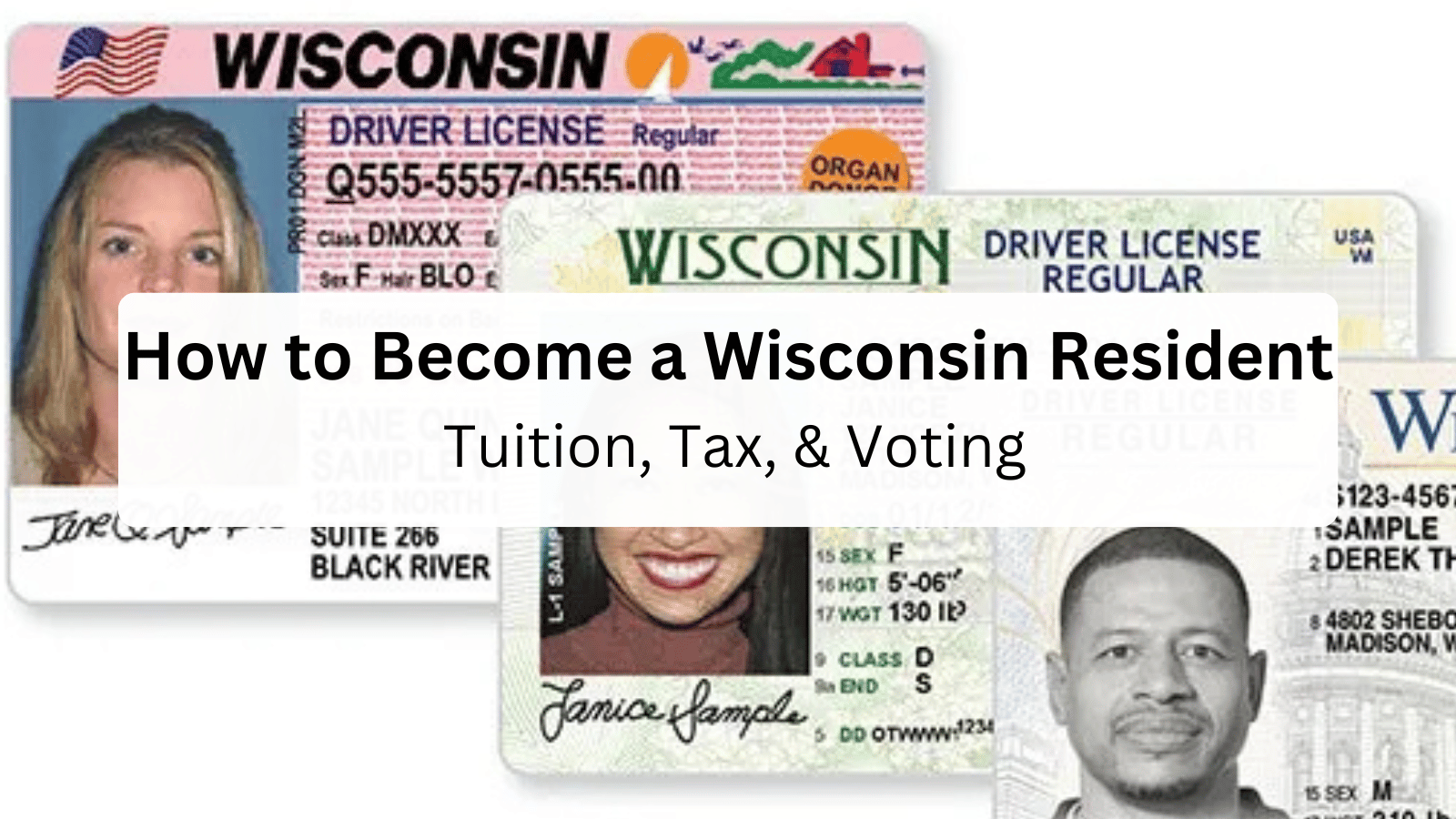How to Become a Wisconsin Resident: Tuition, Tax, & Voting
Are you thinking about becoming a Wisconsin resident? It’s a lot easier than you think. This guide will go over everything you need to know to become a resident and the documents you’ll need. We’ll also go over your responsibilities when you first move to Wisconsin.
If you’re thinking about moving to Wisconsin, we recommend hiring a reputable moving company. Muberr is a locally owned and operated moving company in Wisconsin, ready to do all the heavy lifting for you. You can reach us at 920-662-4863 or book your move online.

Plan your next move with Muberr.
Table of Contents
ToggleHow to become a Wisconsin Resident
The only requirement to become a Wisconsin resident is having a Wisconsin address and providing two supporting documents to prove you live there.
You are considered a resident of Wisconsin if any of the following apply:
- Your main home is in Wisconsin
- You pay income tax in Wisconsin
- You are registered to vote in Wisconsin.
How long does it take to live in Wisconsin to be a resident?
You can immediately start applying to become a Wisconsin resident as soon as you move to the state. There’s no set amount of time you need to wait. Quite the contrary—you’re required to complete the basic duties of a Wisconsin resident starting the moment you make Wisconsin your primary residence.
Basic tasks to complete once you become a Wisconsin resident:
- Apply for a Wisconsin driver’s license within 60 days.
- Get Wisconsin license plates after you receive your new driver’s license.
How to become a Wisconsin resident for tuition
To qualify for in-state tuition, you’ll need to have lived in Wisconsin for at least one year before enrollment. If you’ve lived in the state for less than a year, you’ll be charged out-of-state tuition.
How to become a Wisconsin resident for voting
You need to have lived in Wisconsin for at least 28 days before an election and be registered to vote.
How to become a Wisconsin resident for tax purposes
To pay taxes in Wisconsin, you’ll need to prove ties to the state. Here’s how:
- Register to vote in Wisconsin
- Register your vehicles in Wisconsin
- Have a residence in Wisconsin
- Have a job or business in Wisconsin
Proof of residency in Wisconsin
You’ll need at least two documents that list your name and Wisconsin address, such as:
- A pay stub with the employee’s name and address
- Utility bill
- Bank statement
- Medical bill
How to get a Wisconsin Driver’s License
Visit your nearest DMV and bring the following:
- Completed MV3001 form
- Proof of legal citizenship, permanent resident, conditional or temporary visitor status.
- Proof of name and date of birth
- Proof of identity
- Two proofs of Wisconsin residency
- Social Security Number
- $34 to cover fees
Moving to Wisconsin DMV
As soon as you move to Wisconsin, go to the DMV and:
- Apply for a Wisconsin driver’s license within 60 days
- Get Wisconsin license plates after receiving your new license
REAL ID Wisconsin requirements
To get a REAL ID, bring the following to your nearest DMV:
- Proof of name and date of birth
- Proof of Citizenship or legal status in the US
- Proof of identity
- Proof of address (two forms)
- Social Security Number
What is considered a resident of Wisconsin?
You are considered a resident of Wisconsin if any of the following apply:
- Your main home is in Wisconsin
- You pay income tax in Wisconsin
- You’re registered to vote in Wisconsin
Can you get Wisconsin residency if you go to college?
If your goal is to qualify for in-state tuition, you must live in Wisconsin for at least 12 months before enrolling. Attending college in Wisconsin doesn’t automatically make you a resident—changing your primary residence to Wisconsin does.
